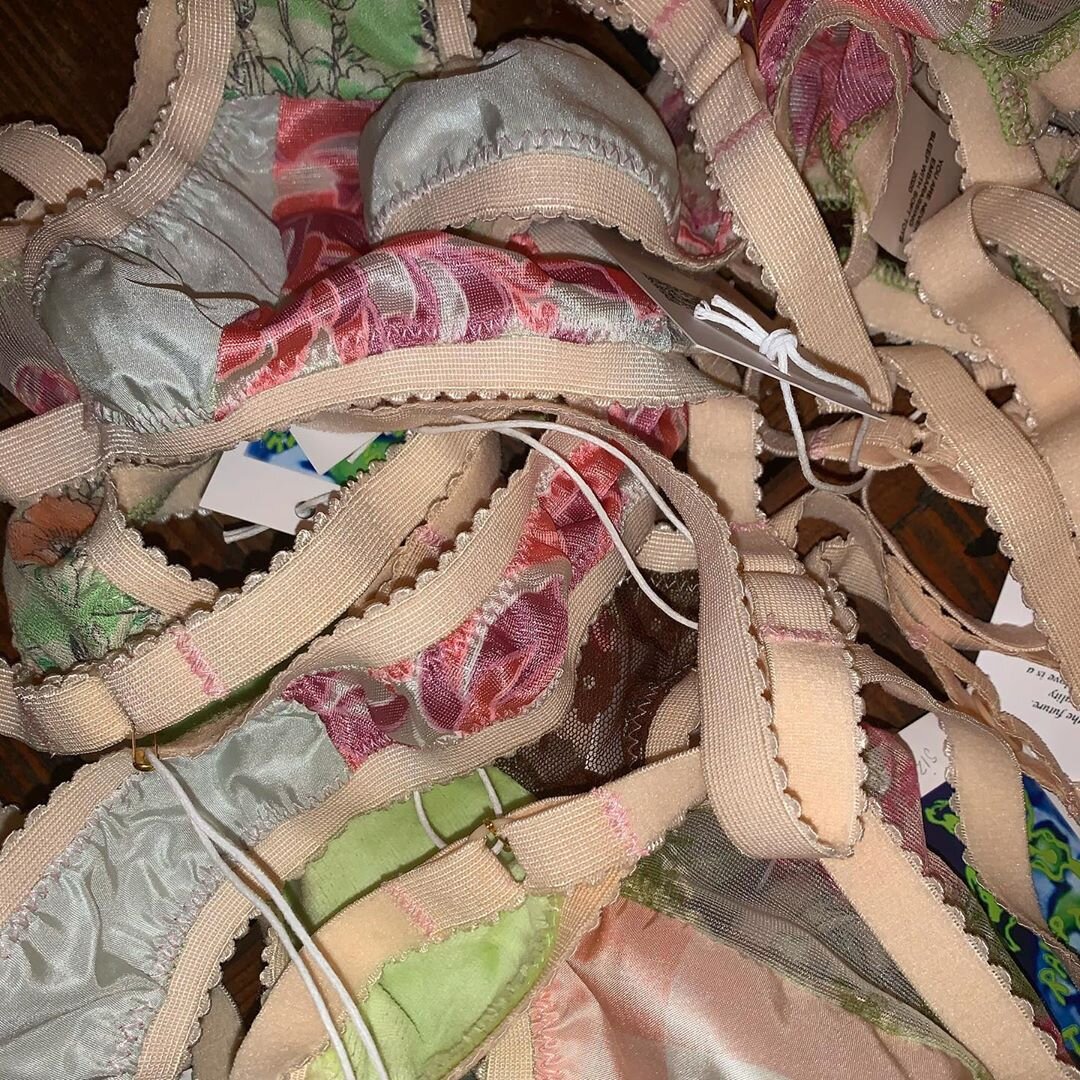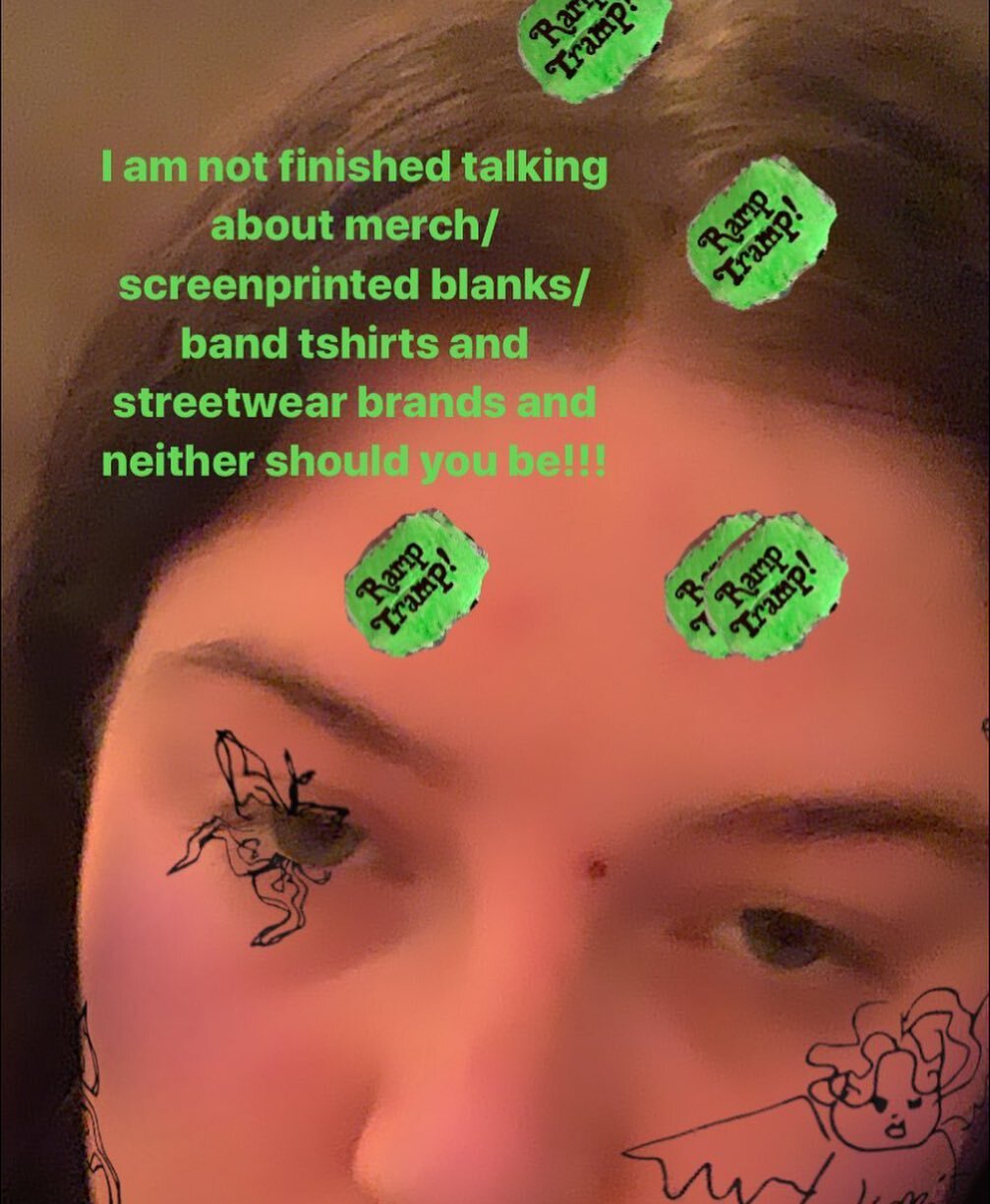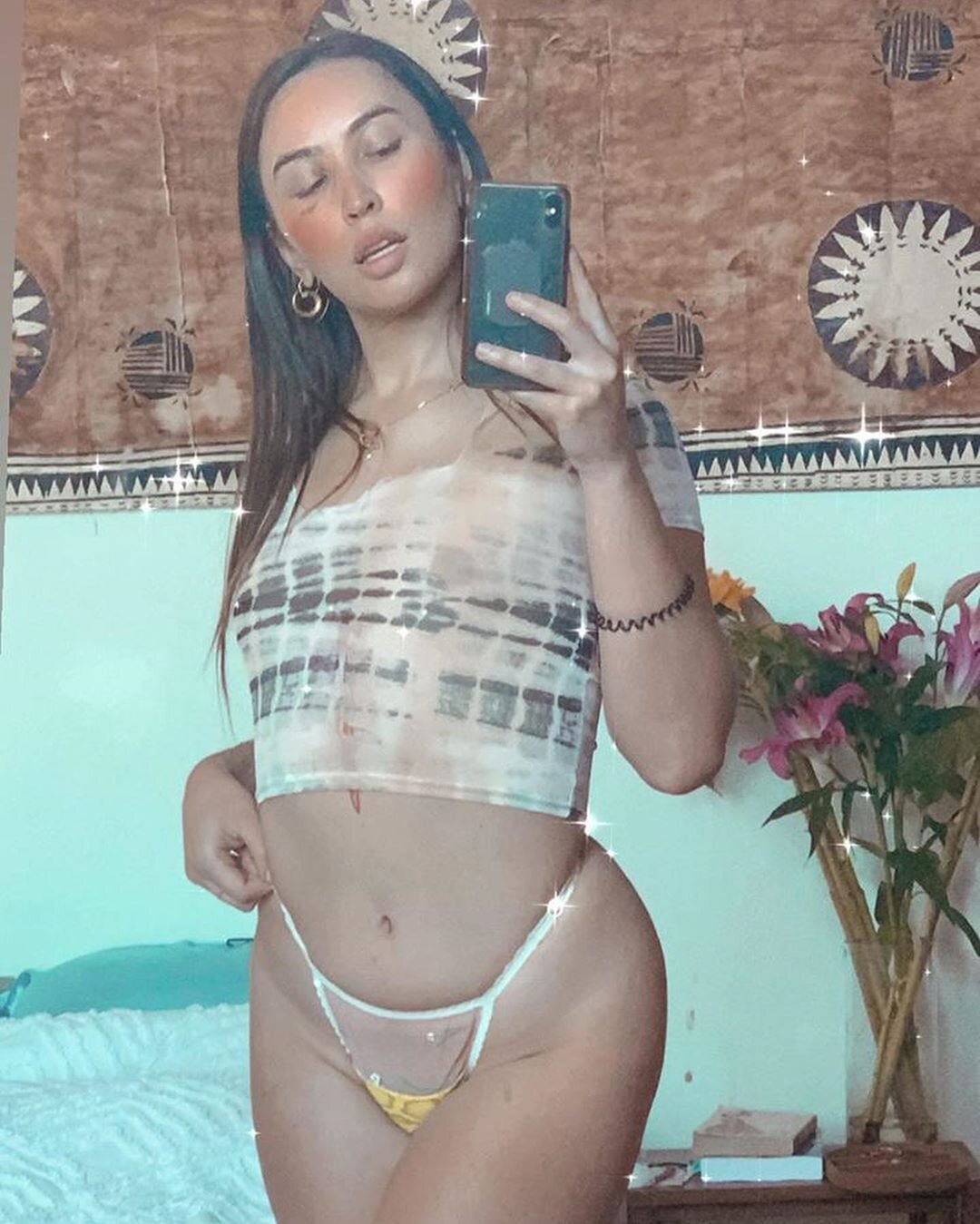Niamh Galea
When we think ‘gender-neutral’, we’re often bombarded with images of tall and skinny models with pixie cuts in tailored pantsuit that drown out their bodies below but is that Androgyny? Niamh Galea’s Ramp Tramp Tramp Stamp is the eclectic brand redefining 'genderless' away from androgyny, in all its slutty glory. Starting out as homage to all our darling skater boys in 2017, the brand uses skater culture and beliefs like being anti-establishment to create consciously for size and sustainability too. Advancing the idea of the ‘normal’ body-type, Niamh has figured out ways to create designs for professional use that can be altered in size easily from an initial size 18 sample. For Niamh, clothing literally is just fabric without it’s capitalistic gendered connotations. In this interview Coeval talks to Niamh about designing as someone who can be called ‘anti-fashion’, her motives and creative process.
Firstly, Why ‘Ramp Tramp’?
“Ramp Tramp” is essentially a derogatory term used to describe people who are obsessed with skater boys, basically a “skater slut”. 2017 was a very important year in my life – I was in an open relationship and was as close to “single” as I had ever been in my adult life and was interning at Eckhaus Latta in LA. I made the most incredible friends during that time, and we were all skater boy obsessed. One time a skater boy friend called me a ramp tramp (a term I didn’t know) and I loved it! So yeah it’s very reminiscent of that formative time and also is a reclaimed slur, which to me is empowering as we all need to own our sexuality and of course the subcultural aspect of it being such a SPECIFIC slur used by a community of predominantly CIS men. I want to make ramp tramps feel like they have their own community! In a similar way the “tramp stamp” is ludicrous and rhyming but is also a reference to another subcultural slur in the tattooing world, where its a very offensive term that implies a tattoo only gotten by sluts! The polite term in that world is “a lower back tattoo”! I am very fascinated by slurs and reclaiming them and I try to use my design practice as a way to reclaim a lot of visual slurs and turn them into forms of empowerment. Wow LONG answer but yeah, don’t get me started on Ramp Tramps!
The clothes you make are flexible in aesthetic and wear – what does your process look like?
I like to define my practice as fit flexible, meaning that I am considering how the pieces will fit a range of genders and sizes comfortably. This is unusual in fashion where the idea of designing for a size 6 (Australian) white woman is still considered standard. The issue with this is that a) bodies change as they get bigger, for example AFAB (assigned female at birth) bodies get increasingly busty so something that looks good on a straight up and down size 6 model won’t translate to a size 18 person. Gender wise it’s important to me to consider how different pieces can accentuate or diminish your gender identity, and of course all clothing IS genderless because clothing does not have a brain therefore cannot have a gender identity!! However it can be gender affirming, for example it can be affirming for trans-men to wear boxy silhouettes that conceal their chests. b) The second key issue is that for small brands it is financially unviable to produce a full size range of products let alone samples for stylists to use in shoots. This means that people make one tiny sample and then stylists are forced to use only use tiny models, because the samples only fit these models. This creates a vicious and toxic cycle that leads to widespread exclusion and limits diversity in fashion images, products released for purchase and the industry at large. To combat this issue I make all my samples based on my own measurements (I’m a size 18 Australian) and then work in mechanisms to the design that allow the fit to be adjusted up or down. This way the pieces can be used in photoshoots on a whole range of bodies and also means when selling one off pieces or very small runs that I can ensure my pieces are inclusive and can be worn by a diverse range of people!
Your brand is an ode to skater boys and skater culture. Where did your interest in that come from?
My highschool sweetheart was a skater boy and I guess the love for skate culture stemmed from learning about it from him. I like that skaters are eternal children, playful and curious and deeply in love with adventure. They are also incredibly anti-establishment in their thinking, which I relate to! Defining my brand as an ode to skater boys is also definitely a tongue in cheek thing though: it’s obviously about so much more and rarely actually delves into the type of clothing they like to wear, I guess in a way I say that as a way of objectifying them back (the same way they objectify ramp tramps as easy sluts) and also because skaters HATE how much fashion is obsessed with their style/ culture so it’s a bit of a *wink wink* fuck you type vibe.
We’ve all heard of the word ‘Sustainability’ by now in all its buzzword glory but what does it mean for you and your brand, Ramp Tramp Tramp Stamp?
Yes, it’s definitely become a buzzword and to be honest in terms of my practice I like to kind of center it as a given in how I make decisions but not as a core part of the brand identity if that makes sense? For me, there is such opportunity in fashion to work creatively with a sustainable approach as an essential parameter. (With the current climate crisis what choice do we have?) I do this in a lot of different ways: I love starting my process by sourcing discarded materials from second hand shops, remnant warehouses and places like reverse garbage which is a treasure trove of junk ripe for regeneration. I then work out how I can elevate or transform those materials. I also try to work in a zero-waste way by hoarding all my scraps like they are precious jewels and using them to make patchwork lingerie. I make G-strings in this way, which I sell in exchange for $100 donations to organizations working to end systematic racism. I rarely use brand new materials and if I do I make sure they are either organically and sustainably farmed or made from recycled plastics. I think it’s really important for there to be radical transparency in sourcing and manufacturing in fashion and that we use tools like Instagram to educate our customers on the impacts of their purchasing decisions. I will also point out that whilst sustainability is core to what I do there really is no such thing as a sustainable fashion brand as fashion itself is encouraging consumerism and consumption. However, I see opportunities in fashion to regenerate waste products and create alternatives to mass produced clothing. I agree sustainability has become a huge buzzword but I feel like I’d rather it be buzzy and people be at least somewhat aware of it or attempting to make change than for it not to be a part of the conversation at all.
You’re originally from Sydney, Australia but now live in New York. Do you feel these two major cities have influenced your working aesthetic at all?
Hmm that’s an interesting question I haven’t really thought about it!! I think that my prioritizing comfort and a level of ease is very Sydney, but to be honest as someone who grew up in Bondi I think a lot of my work is a reaction against Sydney and its minimalist chic beach aesthetic!! In terms of New York, I know my time in LA definitely had a massive influence as I felt like my style was understood for the first time in my life. It's beachy like Sydney but scrappy and dirty and sexy and slutty and more kind of energetic. New Yorkers dress impeccably and I definitely feel more able to dress extravagantly there and I guess that has impacted on the way I design.
You’ve studied fashion and interned at houses like Eckhaus Latta, the industry can be quite stringent; almost exactly the opposite of your brand. Nevertheless, what is the best thing you’ve learned at your time working within institutions?
Interning with Eckhaus Latta was one of the best experiences of my life. I am a massive fashion nerd so while I am often called anti-fashion (and I definitely have a disruptive approach) I have a deep deep love for the whole fashion system despite its many issues, and in some ways because there are so many problems to address and provide possible solutions for!! Eckhaus Latta have become a bit of an American family for me, they gave me work when I was in New York and more importantly a community. I have met through them so many people who are now my literal best friends: their employees, past interns and collaborators! I guess for me I see them as the grandparents of the emerging anti-fashion art house labels we see coming out of New York, LA and Melbourne too, the designers of Gauntlet Cheung met whilst interning at Eckhaus Latta for example! While Eckhaus Latta has definitely become more established now, even in 2017 everything was quite ramshackle and to be honest still is behind the scenes! They are first and
foremost artists and that is how they approach fashion. I have learnt so much from them but definitely a sense of community and lifting up your collaborators is a key lesson. Also the way they build a collection without colour schemes or themes is very inspiring to me. Fashion education has always been the stringent & prescriptive space in which I thrive as I find it very motivating and inspiring to push back against those institutions and interrogate the concepts we are taught as “the way things are done”. Definitely Parsons has a much more open and disruptive approach to learning and designing compared to where I did my undergrad in Sydney. However there is still always lots to fight against and when trying to prove someone wrong I find it pushes you to make your alternative approach stronger and more convincing.
Care to leave us with a song you’d use to describe you and your practice?
At the moment the song that melts me into a calm and positive mood is “Acid Raindrops” by People Under the Stairs. It's very Ramp Tramp Tramp Stamp as it’s very much like chill out and have fun! Life is long and beautiful if painful sometimes, but all we can do is practice reality acceptance and try to turn the hard parts of life into art!!
interview ANISHA KHEMLANI
More to read
























